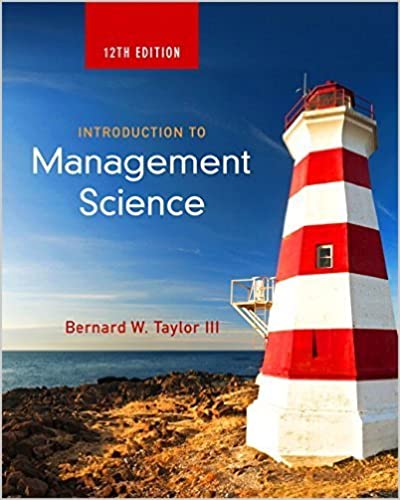
Introduction to Management Science 12th Edition by Bernard Taylor
Edition 12ISBN: 978-0133778847
Introduction to Management Science 12th Edition by Bernard Taylor
Edition 12ISBN: 978-0133778847 Exercise 23
In Chapter, the formula for the optimal order quantity of an item, Q , given its demand, D , ordering cost, C o, and the cost of holding, or carrying, an item in inventory, C c , is as follows:

The total inventory cost formula is

Ordering cost, C o , and carrying cost, C c , are generally values that the company is often able to determine with certainty because they are internal costs, whereas demand, D , is usually not known with certainty because it is external to the company. However, in the order quantity formula given here, demand is treated as if it were certain. To consider the uncertainty of demand, it must be simulated.
Using Crystal Ball, simulate the preceding formulas for Q and TC to determine their average values for an item, with C o = $150, C c = $0.75, and demand, D , that is normally distributed with a mean of 10,000 and a standard deviation of 4,000.

The total inventory cost formula is

Ordering cost, C o , and carrying cost, C c , are generally values that the company is often able to determine with certainty because they are internal costs, whereas demand, D , is usually not known with certainty because it is external to the company. However, in the order quantity formula given here, demand is treated as if it were certain. To consider the uncertainty of demand, it must be simulated.
Using Crystal Ball, simulate the preceding formulas for Q and TC to determine their average values for an item, with C o = $150, C c = $0.75, and demand, D , that is normally distributed with a mean of 10,000 and a standard deviation of 4,000.
Explanation
The formula to calculate optimal order q...
Introduction to Management Science 12th Edition by Bernard Taylor
Why don’t you like this exercise?
Other Minimum 8 character and maximum 255 character
Character 255


